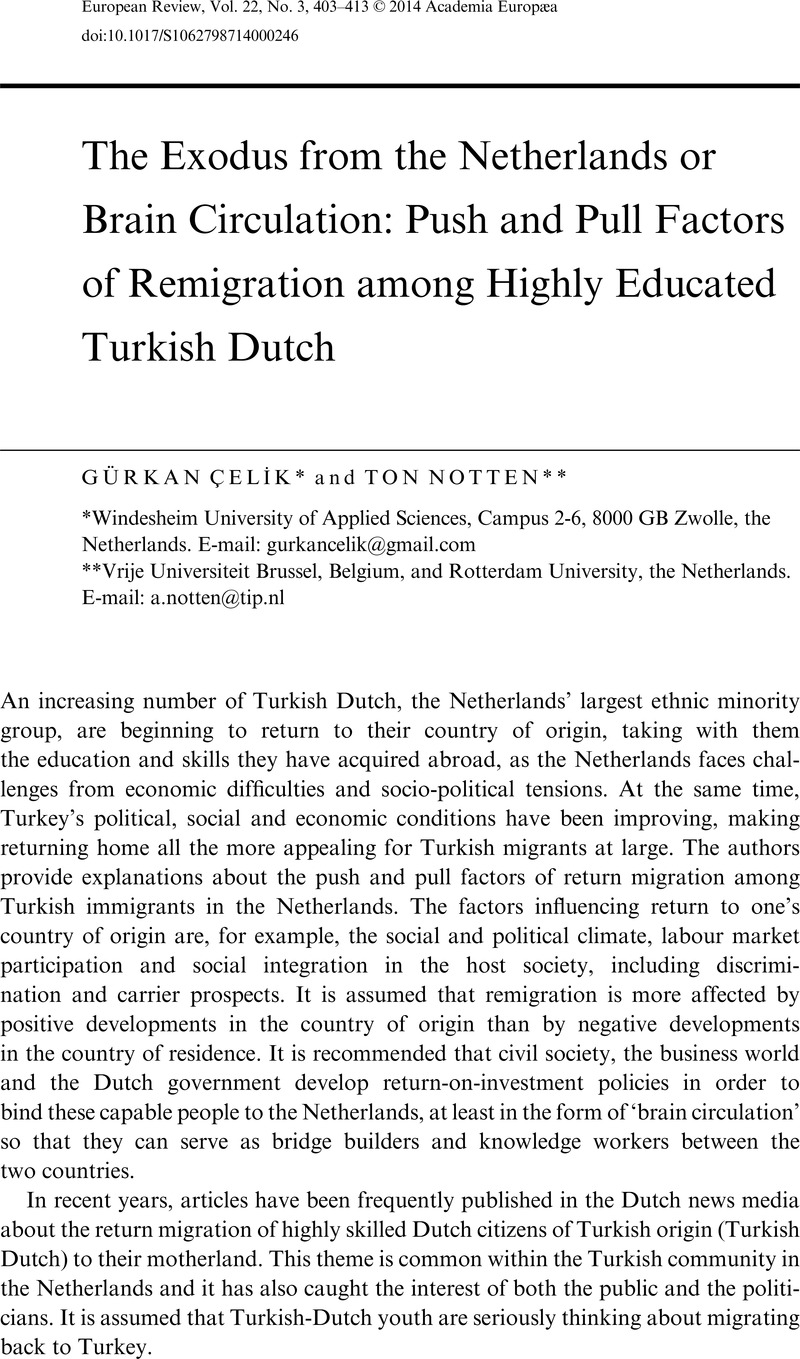Crossref Citations
This article has been cited by the following publications. This list is generated based on data provided by Crossref.
de Jong, Petra Wieke
2022.
Patterns and Drivers of Emigration of the Turkish Second Generation in the Netherlands.
European Journal of Population,
Vol. 38,
Issue. 1,
p.
15.
de Jong, Petra W.
and
de Valk, Helga A.G.
2023.
Emigration of the Western European second generation: is having immigrant parents a predictor of international migration?.
Journal of Ethnic and Migration Studies,
Vol. 49,
Issue. 17,
p.
4244.
Belabas, Warda
and
de Jong, Petra
2024.
The unique nature of second-generation migration experiences: a case study of the Moroccan Dutch.
Journal of Ethnic and Migration Studies,
p.
1.





